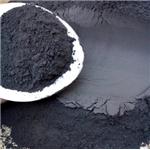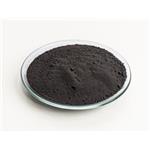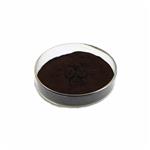- Graphite
-

- $1210.00 / 1metric tonnes
-
2024-04-26
- CAS:7782-42-5
- Min. Order: 1metric tonnes
- Purity: 99%
- Supply Ability: 1000tons
- Graphite
-

- $20.00 / 1kg
-
2023-09-18
- CAS:7782-42-5
- Min. Order: 1kg
- Purity: 0.99
- Supply Ability: 20 tons
- Graphite
-

- $0.00 / 1KG
-
2023-09-06
- CAS:7782-42-5
- Min. Order: 1KG
- Purity: 99%
- Supply Ability: 500000kg
Related articles - What is graphite metal?
- Graphite is a is a form of carbon and a non-metal but the only non-metal can conduct electricity. It is an excellent conducto....
- Mar 18,2024
|
| | Graphite Basic information |
| | Graphite Chemical Properties |
| Melting point | 3652-3697 °C(lit.) | | Boiling point | 4830°C | | density | 2.2 g/mL at 25 °C | | storage temp. | no restrictions. | | solubility | insoluble in H2O | | form | rod | | color | black | | Specific Gravity | 2.25 | | PH | 5-6 (50g/l, H2O, 20℃)(slurry) | | resistivity | (Electrical resistivity: surface 0.06 Ω/sq, sheet 2.7 μΩ m) | | Water Solubility | Insoluble in water. | | Sensitive | Air & Light Sensitive | | Crystal Structure | Hexagonal | | Merck | 13,4554 | | Dielectric constant | 12.0(Ambient) | | Exposure limits | ACGIH: TWA 2 mg/m3
OSHA: TWA 15 mg/m3; TWA 5 mg/m3
NIOSH: IDLH 1250 mg/m3; TWA 2.5 mg/m3 | | NIST Chemistry Reference | Graphite(7782-42-5) | | EPA Substance Registry System | Graphite (7782-42-5) |
| | Graphite Usage And Synthesis |
| Chemical Properties | soft dark grey solid | | Chemical Properties | Graphite is crystallized carbon and usually
appears as soft, black scales. There are two types of graph ite, natural and artificial (activated). Natural and synthetic
graphite may be mixed with each other or contain other
additives. | | Occurrence | Graphite is usually found in metamorphic rocks as veins, lenses, and pockets and as thin laminae disseminated in gneisses, schists, and phyllites. Depending upon the mode of occurrence
and origin, it is graded into three forms: flake graphite found in metamorphosed rocks as vein
deposits, crystalline graphite found as fissure-filled veins, and cryptocrystalline graphite formed in metamorphosed coal beds. Natural graphite occurs in many parts of the world in
fair abundance and it has been used in various applications.
In nature, graphite is found
usually in association with feldspars, mica, quartz, pyroxene, rutile, pyrites, and apatite.
These impurities are associated with vein graphite. The impurities with amorphous graphite
are shale, slate, sandstone, quartz, and limestone. Graphite is found in almost every country,
but Ceylon, Madagascar, Mexico, western Germany, and Korea all possess particularly plentiful reserves. Major industrial producers of graphite are South Korea, the largest producer
in the world, followed by Austria. | | Uses | Similar to those of natural graphite in
refractories and electrical products | | Uses | Graphite has been used alone to make refractory products for the lower blast furnace linings, and electrodes for steel and aluminum production. They are also commonly used in conjunction with other refractory raw materials. These materials are highly refractory nonwettable materials and are useful refractories in nonoxidizing environments. Carbon blacks are co | | Uses | For "lead" pencils, refractory crucibles, stove polish; as pigment, lubricant, graphite cement; for matches and explosives, commutator brushes, anodes, arc-lamp carbons, electroplating; polishing Compounds, rust and needle-paper; coating for cathode ray tubes; moderator in nuclear piles. | | Uses | High-temperature lubricant,
crucible container for handling
molten metals such as Mg, Al,
Zn, Ga, Sb, and Bi | | Definition | An allotrope of CARBON.
Graphite is a good conductor of heat and
electricity. The atoms are arranged in layers
which cleave easily and graphite is used
as a solid lubricant. | | Preparation | Impervious graphite is manufactured by processing graphite at temperatures above 2000°C
using Acheson furnaces, evacuating the pores, and impregnating with a phenolic resin. The impregnation seals the porosity. | | Application | Flake graphite containing 80 to 85 wt.% C is used for crucible manufacture; 93 wt.% C and
above is preferred for the manufacture of lubricants, and graphite with 40 to 70 wt.% C is used
for foundry facings. Natural graphite, refined or otherwise pure, having a carbon content of not
less than 95%, is used in the manufacture of carbon rods for dry battery cells.
The utility of graphite is dependent largely upon its type, i.e., flake, lumpy, or amorphous.
The flake-type graphite is found to possess extremely low resistivity to electrical conductance. The electrical resistivity decreases with an increase in flaky particles. In addition, the
bulk density decreases progressively as the particles become more and more flaky. Because
of this property in flake graphite, it enjoys widespread use in the manufacture of carbon
electrodes, plates, and brushes required in the electrical industry and dry-cell batteries.
| | General Description | A mineral form of the element carbon. Hexagonal crystals or thin leaf-like layers. Steel-gray to black with a metallic luster and a greasy feel. An electrical conductor. Used for high-temperature crucibles, as a lubricant and in "lead" pencils. | | Reactivity Profile | GRAPHITE is non-flammable in bulk form, but combustible. A reducing agent. Mixtures of graphite dust and air are explosive when ignited.Reacts violently with very strong oxidizing agents such as fluorine, chlorine dioxide, and potassium peroxide. Almost inert chemically when in bulk form. Keep away from ignition sources and oxidizing agents. | | Health Hazard | Pure synthetic graphite acts as
an inert or nuisance dust. | | Flammability and Explosibility | Non flammable | | Industrial uses | Graphite is a form of carbon. It was formerlyknown as black lead, and when first used forpencils was called Flanders’ stone. It is a naturalvariety of elemental carbon with a grayishblackcolor and a metallic tinge.
Carbon and graphite have been used inindustry for many years, primarily as electrodes,arc carbons, brush carbons, and bearings.In the last decade or so, development ofnew types and emergence of graphite fibers asa promising reinforcement for high-performancecomposites have significantly increasedthe versatility of this family of materials. | | Potential Exposure | Natural graphite is used in foundry
facings, steel making lubricants, refractories, crucibles,
pencil “lead,” paints, pigments, and stove polish. Artificial
graphite may be substituted for these uses with the excep tion of clay crucibles; other types of crucibles may be pro duced from artificial graphite. Additionally, it may be used
as a high temperature lubricant or for electrodes. It is uti lized in the electrical industry in electrodes, brushes, con tacts, and electronic tube rectifier elements; as a constituent
in lubricating oils and greases; to treat friction elements,
such as brake linings; to prevent molds from sticking
together; and in moderators in nuclear reactors. In addition,
concerns have been expressed about synthetic graphite in
fibrous form. Those exposed are involved in production of
graphite fibers from pitch or acrylonitrile fibers and the
manufacture and use of composites of plastics, metals, or
ceramics reinforced with graphite fibers. | | Shipping | UN1362 Carbon, activated, Hazard Class: 4.2;
Labels: 4.2-Spontaneously combustible material, International. | | Purification Methods | Treat graphite with hot 1:1 HCl. Then filter, wash and the dried powdered is heated in an evacuated quartz tube at 1000o until a high vacuum is obtained. Cool this and store it in an atmosphere of helium [Craig et al. J Phys Chem 60 1225 1956]. | | Incompatibilities | Graphite is a strong reducing agent and
reacts violently with oxidizers, such as fluorine, chlorine
trifluoride, and potassium peroxide. Forms an explosive
mixture with air. May be spontaneously combustible in air. | | Waste Disposal | Do not incinerate. Carbon
(graphite) fibers are difficult to dispose of by incineration.
Waste fibers should be packaged and disposed of in a land fill authorized for the disposal of special wastes of this
nature, or as otherwise may be required by law. |
| | Graphite Preparation Products And Raw materials |
|